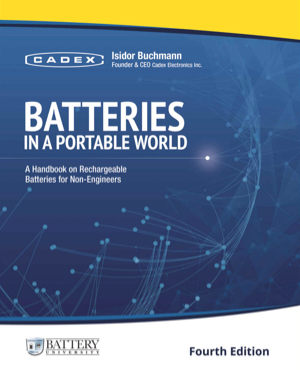NOTE: This article has been archived. Please read our new "New Lead Acid Systems" for an updated version.
Lead acid batteries continue to hold a leading position, especially in wheeled mobility and stationary applications. This strong market appeal entices manufacturers to explore ways to make the batteries better. Improvements have been made and some claims are so promising that one questions the trustworthiness. It is no secret that researchers prefer publishing the positive attributes while keeping the negatives under wraps. The following information on lead acid developments was obtained from available printed resources at the time of writing.
Firefly Energy
The composite plate material of the Firefly Energy battery is based on a lead-acid variant that is lighter, longer living, and has higher active material utilization than current lead acid systems. It is also one of the few lead-acid batteries that can operate for extended time in partial-states-of-charge. The battery includes carbon-foam electrodes for the negative plates, which gives it a performance that is comparable to NiMH but at lower manufacturing costs. Firefly Energy was a spin-off of Caterpillar and in 2010 went into bankruptcy. The company was revived under separate ownership. Today, Firefly International Energy manufactures the Oasis line of batteries in limited quantities in the US.
Altraverda Bipolar
Similar to the Firefly Energy battery, the Altraverda battery is based on lead. It uses a proprietary titanium sub-oxide ceramic structure, called Ebonex®, for the grid and an AGM separator. The un-pasted plate contains Ebonex® particles in a polymer matrix that holds a thin lead alloy foil on the external surfaces. With 50–60Wh/kg, the specific energy is about one-third larger than regular lead acid and is comparable with NiCd. Based in the UK, Altraverda works with East Penn in the USA, and the battery is well suited for higher voltage applications.
Axion Power
The Axion Power e3 Supercell is a hybrid battery/ultracapacitor in which the positive electrode consists of standard lead dioxide and the negative electrode is activated carbon, while maintaining an assembly process that is similar to lead acid. The Axion Power battery offers faster recharge times and longer cycle life on repeated deep discharges than what is possible with regular lead acid systems. This opens the door for the start-stop application in micro-hybrid cars. The lead-carbon combination of the Axion Power battery lowers the lead content on the negative plate, which results in a weight reduction of 30 percent compared to a regular lead acid. This, however, also lowers the specific energy to 15–25Wh/kg instead of 30–50Wh/kg, which a regular lead acid battery normally provides.
CSIRO Ultrabattery
The CSIRO Ultrabattery combines an asymmetric ultracapacitor and a lead acid battery in each cell. The capacitor enhances the power and lifetime of the battery by acting as a buffer during charging and discharging, prolonging the lifetime by a factor of four over customary lead acid systems and producing 50 percent more power. The manufacturer also claims that the battery is 70 percent cheaper to produce than current hybrid electric vehicle (HEV) batteries. CSIRO batteries are undergoing road trials in a Honda Insight HEV and show good results. Furukawa Battery in Japan licensed the technology. The CSIRO battery is also being tested for start-stop applications in micro-hybrid cars to replace the lead acid starter battery. This battery promises extended life when exposed to frequent start-stop conditions and is able to take a fast charge.
EEStor
This is the mystery battery/ultracapacitor combination that receives much media attention. The battery is based on a modified barium titanate ceramic powder and claims a specific energy of up to 280Wh/kg, higher than lithium-ion. The company is very secretive about their invention and releases only limited information. Some of their astonishing claims are: One-tenth of the weight of a NiMH battery in a hybrid application, no deep-cycle wear-down, three- to six-minute charge time, no hazardous material, similar manufacturing costs to lead acid, and a self-discharge that is only 0.02 percent per month, a fraction of that of lead acid and Li-ion.
EEStor | NiMH Hybrid | Lead Acid, Gel | |
Weight (lbs) | 300 | 1,700 | 3,600 |
Self-discharge rate/30 days | 0.02% | 5% | 1% |
Charge time 100% SoC | 3-6 minutes | >3H | 3-15h |
Deep cycle wear-down | None | High | Very high |
Hazardous material | None | Yes | Yes |
Estimated cost | $5,200 | $11,200 | $5,200 |
Source: ESTOR

Comments
Looking for comments from the previous website?
Comments from the previous website are not compatible with our new commenting system but we have preserved them so our users can still reference and make use the information in them.
